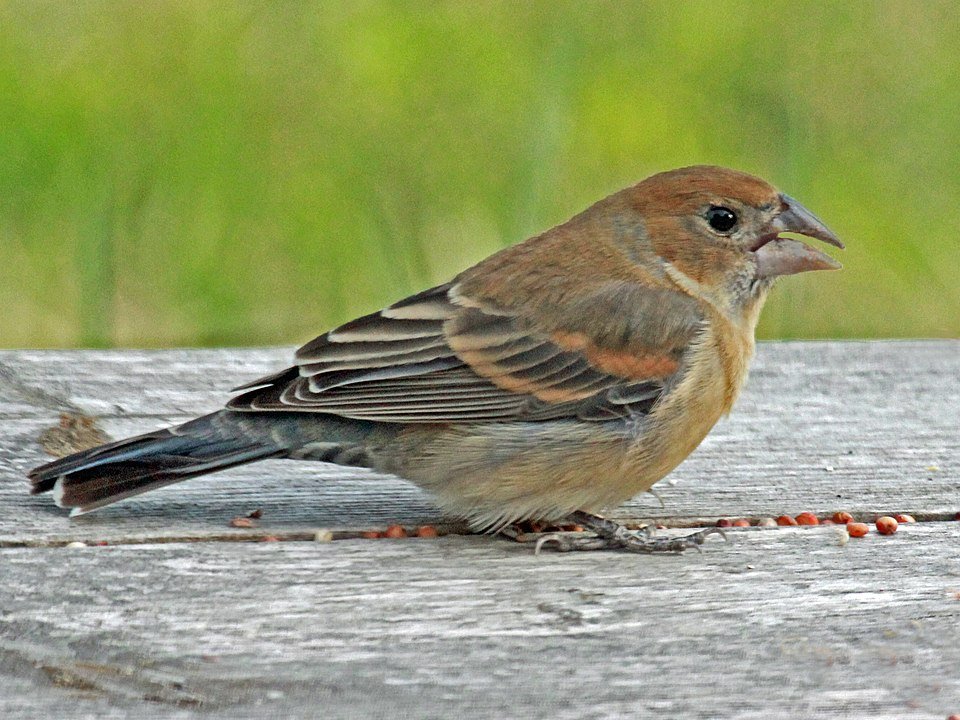The Passerina caerulea or commonly known to be the blue grosbeak is a medium-sized passerine bird found in North America that belongs to the Cardinalidae family of birds.
Quick Overview: Passerina Caerulea – Blue Grosbeak
Body size: Around 6.25-7.5 in (16-19 cm) in length and weighed 28 g (1 oz)
Main colors: Purple-Blue, Brown, Black, Silver, Blue
Range: Central United States
Migratory Bird: Yes
Best time of the year to see in the U.S.: June, July, August, September
Conservation Status: Least Concern
Blue Grosbeak Description
Males of this species have bold purplish-blue plumage with brownish edges on their backs, like many passerine species. Males have two brown wing bars on their middle and greater secondary coverts. Black upper and silvery lower blue grosbeaks are males. Black lores extend from the males’ lower mandible to their chin. Females are mostly brown with some blue on their heads and wings. On their wings are two light brown wing bars. Their breast feathers are a lighter brown than their body.


Size
This medium-sized bird is 6.25-7.5 in (16-19 cm) in length and weighed 28 g (1 oz). Its wingspan could range around 10.5-11.5 in (27-29 cm).
Feeding
The majority of their food consists of insects and seeds they gather from the ground and they also consume fruits on occasion.
Habitat
Brushy, moist pastures and roadside thickets are among the species’ preferred habitats.
Behavior
Males feed in the spring before females arrive. Feminine selection is likely influenced by ultraviolet structural ornamentation in male feathers. During the summer, male and female flocks feed together. They may occasionally hop awkwardly while foraging, but they usually fly low over the ground. Males closely follow females during mating.
Passerina Caerulea Scientific Classification
- Kingdom: Animalia
- Phylum: Arthropoda
- Subphylum: Chelicerata
- Class: Aves
- Order: Passeriformes
- Family: Cardinalidae
- Genus: Passerina
- Species: Passerina caerulea
Subspecies
There are seven subspecies recognized in these species namely: P. c. caerulea – southeast and south central USA, P. c. interfusa– west central USA and north Mexico, P. c. salicaria– southwest USA and northwest Mexico, P. c. eurhyncha – central and south Mexico, P. c. chiapensis – south Mexico to Guatemala, P. c. deltarhyncha ) – west Mexico, – south Guatemala to northwest Costa Rica, P. c. lazula – south Guatemala to northwest Costa Rica
Best time of the year to see
IfThe best time of the year you could these birds in the United States is during the summer season (June to September).
Distribution of the Blue Grosbeak in the USA
The Blue Grosbeak breeds in subtropical and tropical forest, shrubland, and grassland ecosystems. It breeds in the southern and central US, Mexico, and Central America, and winters in the same areas.
In the United States, these birds could be found in the following states: Alabama, Arizona, Arkansas, Delaware, Florida, Georgia, Indiana, Iowa, Kansas, Kentucky, Louisiana, Maryland, Minnesota, Mississippi, Missouri, North Carolina, North Dakota, Ohio, Oklahoma, South Carolina, South Dakota, Tennessee, Texas, Virginia, West Virginia, and Wisconsin.

